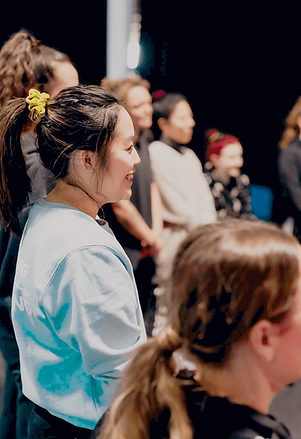How to be an Injury-Free Cheerleader: Top Tips From Leading Sport Injury Experts!!!
- ellalouisesportreh
- Mar 26
- 3 min read
Updated: Apr 26
Cheerleading is a physically demanding and high-impact sport that requires strength, flexibility, coordination, and endurance. Whether you’re an all-star cheerleader pushing the limits of tumbling or stunting, your body takes on immense Physical & Emotional stress.
Unfortunately, injuries are all too common in cheer—unless you take the right steps to prevent them.
As a student sports injury rehabilitator and cheerleading coach, I’ve seen firsthand how proper preparation and recovery can make all the difference.
That's why I’m excited to announce that we have put together a new eBook: How to Be an Injury-free Cheerleader! – a guide is packed with expert knowledge to help cheerleaders stay strong, prevent injuries and enhance their performance.
👉 Get Your Copy Now
Here’s a sneak peek at what you’ll learn:

1. Bulletproof your warm-up
A well-structured warm-up prepares your body for the physical demands of cheerleading. Missing this step can leave you vulnerable to injuries like muscle strains and ligament sprains.
A proper warm-up follows the RAMP protocol, which stands for Raise, Activate, Mobilise, and Potentiate. In the guide this is explained in more detail, and a two-part warm-up routine is also provided to optimise your training session!
2. Injury management – PEACE and LOVE
Cheerleaders often push through pain, but managing soft tissue injuries correctly is key to a quick recovery, supporting healing and preventing further complications.
We’ll teach you the PEACE & LOVE framework (Dubois et al., 2020), a research-backed method for healing soft tissue injuries without relying on anti-inflammatories.

3. Concussion Awareness
Concussions are the most common head injury in cheerleading, and 96% are secondary to stunt-related incidents (Shields et al., 2009). Recognising the signs and symptoms of concussion is crucial:
· Headaches
· Nausea or Vomiting
· Dizziness
· Loss of consciousness
· Double vision or blurry vision
· Ringing in the ears
· Sensitivity to light and noise
· Feeling tired or drowsy
· Memory loss
· Confusion
· Incoherent speech
· Dazed or vacant stare
· Difficulty concentrating
If you or a teammate experiences any of these symptoms after an impact, stop the activity immediately and seek medical evaluation. Ignoring concussion symptoms can lead to long-term complications and delayed recovery.
4. Strength and conditioning for prehab
Strength and Conditioning (S&C) refers to the discipline of using exercise to improve physical performance, reduce injury risk, and enhance performance. It encompasses structured training programs that focus on developing an individual’s strength, power, speed, agility, endurance, and flexibility.
This guide provides you with information and exercises on these components to help you get started with Prehab!

5. Nutrition to fuel training
Nutrition is key to good health and performance. This section breaks down:
· Pre-training meals for training
· Nutrition for competitions
· Recovery nutrition to enhance muscle repair
6. Signs you need a break
Overtraining and pushing through pain can lead to serious injuries. Listen to your body and recognise these warning signs:
Inability to concentrate
Usual activities hurt
Can’t get warm
If you experience any of these, take time to rest and recover. Seeking professional guidance from a coach, therapist, or sports injury rehabilitator can prevent small issues from becoming long-term problems. This guide will also provide some prevention tips.
Get Your Copy Today!
This eBook is designed for cheerleaders, coaches, and parents who want to stay ahead of injuries and perform at their best. With step-by-step guidance, expert tips, and practical injury prevention techniques.
If you’re serious about staying injury-free and performing at your best, this guide is for you.
🚀 Download "How to Be an Injury-Free Cheerleader" now and take control of your training!
Train Smart, Stay Safe
Being an injury-free cheerleader doesn’t mean avoiding challenges; it means preparing your body to handle them. Prioritise a structured warm-up, build strength through prehab, fuel your body properly, and listen to warning signs of overtraining. With the right approach, you can perform at your best while keeping injuries at bay.
Our blogs and articles are not designed to replace medical advice. If you have an injury, we recommend seeing a qualified health professional. We offer both in-person assessments and online consultations.



.png)





Comments